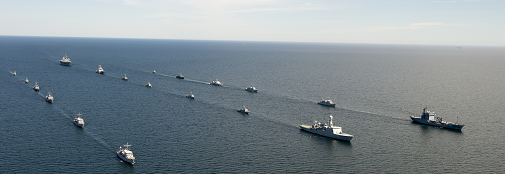Baltic Sea Security

Ships from various nations in the Baltic Region at Baltic Operations 2014. (Copyright: US Navy/Luis R. Chavez Jr.. Rescaled for this purpose. Source.)
Russia’s aggressive behavior put Baltic Sea security back on top of the NATO agenda for the first time since the Cold War and reintroduced the old, familiar strategic concepts of deterrence and reassurance. Developments have already had a major impact on political and military decisions in the countries surrounding the Baltic Sea, and the debate is likely to continue – even accelerate – in the run-up to the NATO Warsaw Summit in 2016. The issues at hand are complex: How should the countries in the region, their allies and partners meet the new strategic challenges posed by a Russia that is no longer a partner of the West? What can be done to strengthen and enhance regional cooperation? How can we ensure that security in the region remains on the strategic agenda? What are the views and perceptions of the strategic situation among the countries bordering the Sea, how do they differ and why? In short, how can the allies and partners meet the new challenges in the region?
To discuss these issues, the Center for Military Studies invited a group of experts to share their analyses of the strategic challenges in the Baltic Sea region at a conference in Copenhagen on June 2, 2015. The analyses are jointly presented in this report.
